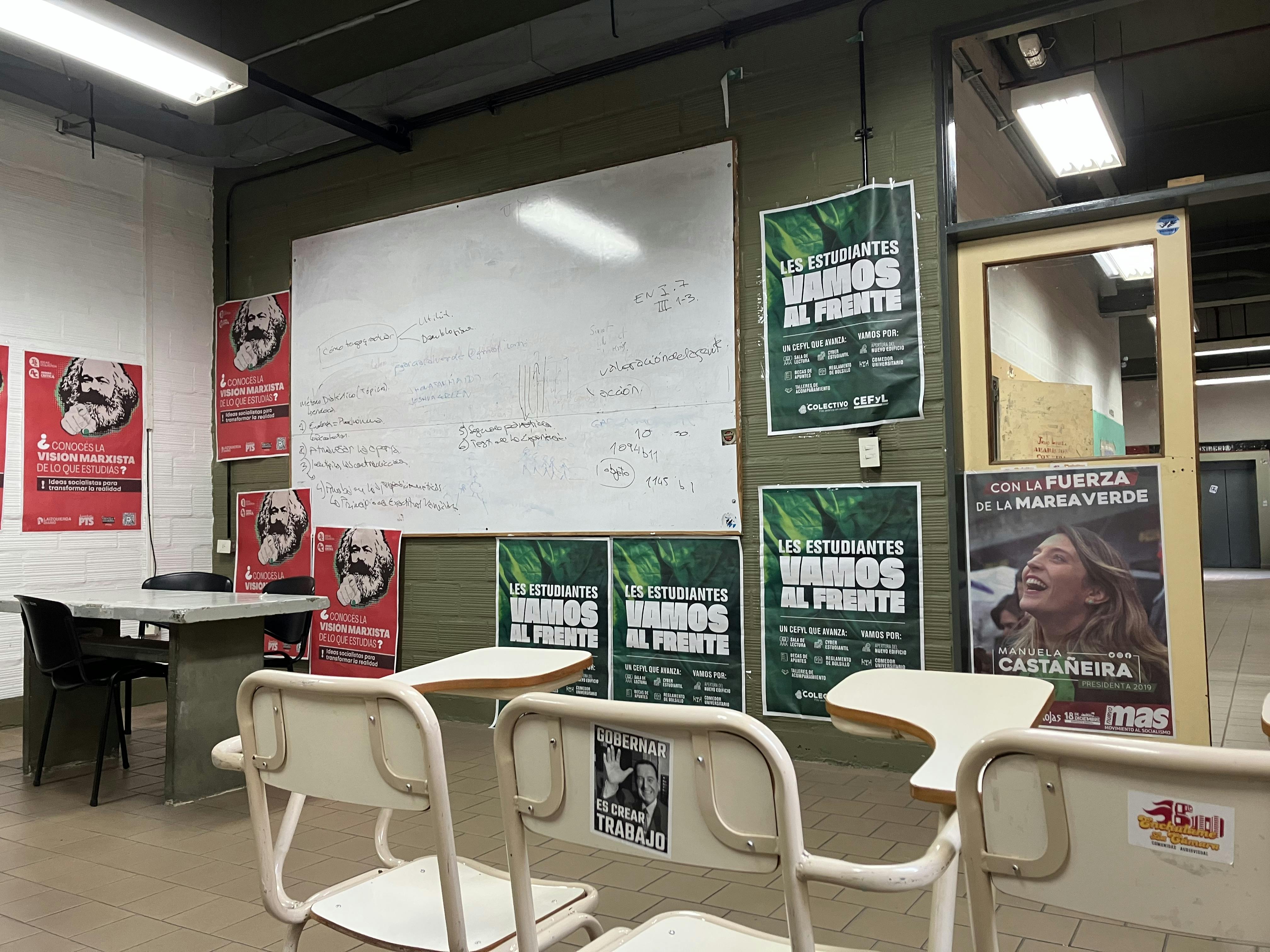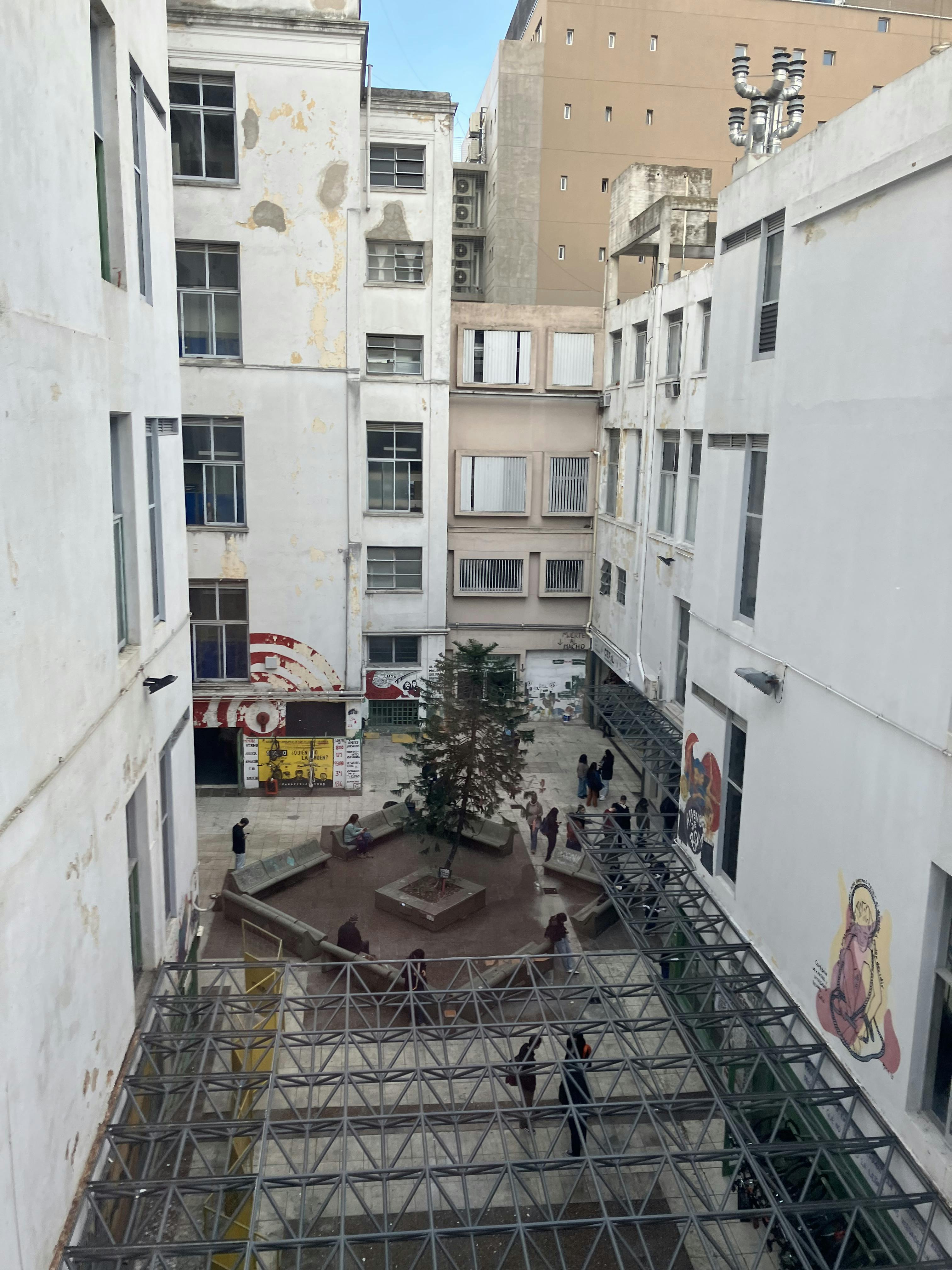Updates
15 Idiosyncrasies of Buenos Aires
I ended up doing exactly what I promised I wouldn’t do, what everyone who studies abroad and maintains a blog often does after a few months: I disappeared. It’s been four months since I published my last update. The good thing is that I didn’t stop writing because of laziness…at least not only because of laziness. I was super busy with my classes that I started in March, I met some really amazing friends, and I moved to an apartment to live alone. That is, I had very little free time to dedicate to this blog. Afterwards, my mom, dad, and sister came to visit me, and we traveled throughout Buenos Aires and to Bariloche, in Patagonia. Let’s just say these months were packed with readings, exams, outings with friends, lessons about living alone, and travels.
In the next weeks–my last here in Argentina–I’m going to focus on the research part of the blog, considering it’s the most important, but the idea is to also share some updates to start closing this part of my life. Later, this fall, for those who want to keep listening, I received an extension grant to continue looking into Argentine culture, my experiences with it, what it means to be interculturally competent, and how acculturation continues after an immersion experience. This extension will focus on the dissemination of my experience in Argentina in UW-River Falls and in the nearby high schools, but I’ll also publish some updates on this website.
Without further ado, I’d like to share something I’ve been preparing: the 15 idiosyncrasies of Buenos Aires. These particularities are some that I’ve observed throughout my time in the city. I recognize that they may be characteristics typical of other cities, that perhaps they aren’t all that unique, but I’m sharing them here because they have stood out to me, and together they constitute the city seen from my perspective.
1. There are many dog walkers that take dogs for a stroll while their owners are at work. Their job is actually quite important: there’s a dog walker register and even training for them! You can find a dog walker walking up to 20 dogs at once.
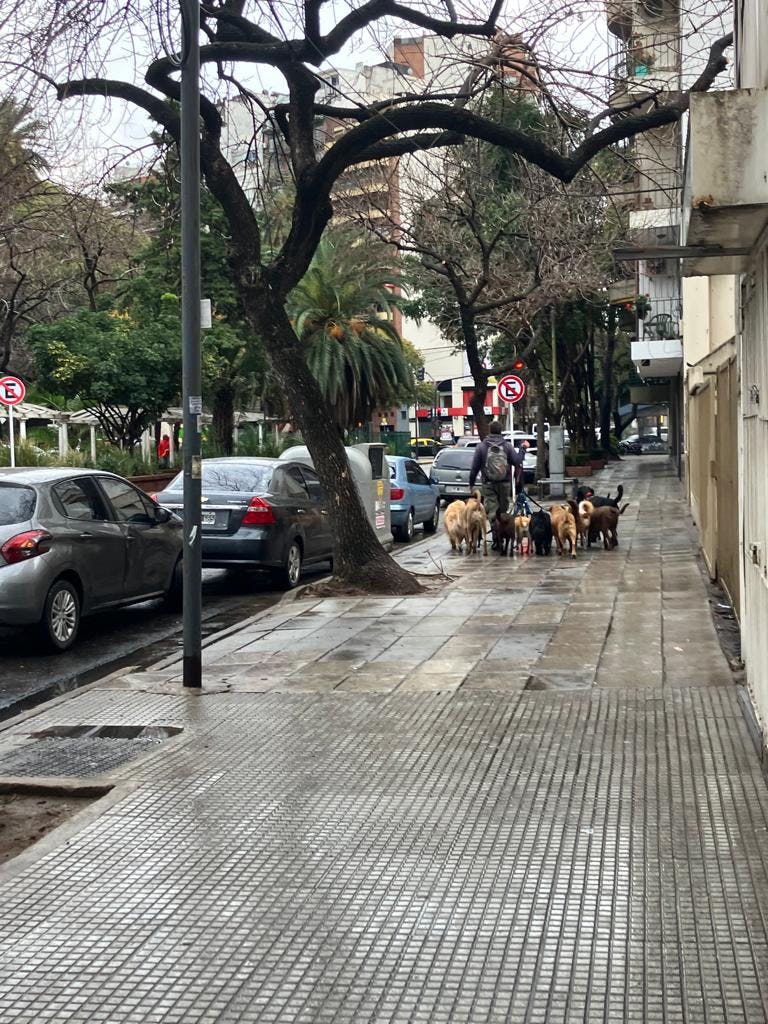
2. The “porteños” love their pets. This is an Argentine characteristic, but it’s something particularly noticeable in the city. You can see a ton of dogs in the city’s green spaces–there are 460,000 in the city–but there are also lots of cats–368,000 to be exact.
3. The sidewalks are filled with dog poop. It’s very common to see dog poop while you walk around the city, more than anything in the residential neighborhoods. You really have to pay attention when you’re walking!!
4. Cardboard collectors–cartoneros–are people that collect recyclables in the city. It’s an officially recognized job, though it didn’t start out that way. Around the year 2001, when Argentina was going through a particularly difficult time economically, people began to collect recyclables for money. Today, through 12 cooperatives, the Government of the City of Buenos Aires employs 6,300 cartoneros, and the Argentine Federation of Cardboard Collectors, Cart Drivers y Recyclers was formed to control their operation in the country.
5. Lunfardo is the lexicon (vocabulary) of Buenos Aires and is made up of six thousand terms. Otilia Da Veiga of the Porteño Academy of Lunfardo says, “Lunfardo is a vocabulary that sits upon Spanish grammatical structure [...] What makes Lunfardo novel is that it wasn’t born from Spanish, but from the hodgepodge of immigrant languages”. It’s a characteristic that represents well the strong influence of immigrants in Argentina and in the city that, as an important port, received them.
6. The subte–the subway–stands out for two reasons. First, it was the first metro in Latin America. Second, probably because it was designed by the English, its trains travel on the left track. Therefore, in order to know where to enter the subway, in relation to the avenues, it’s convenient to remember that the subte goes in the opposite direction than that of the cars.
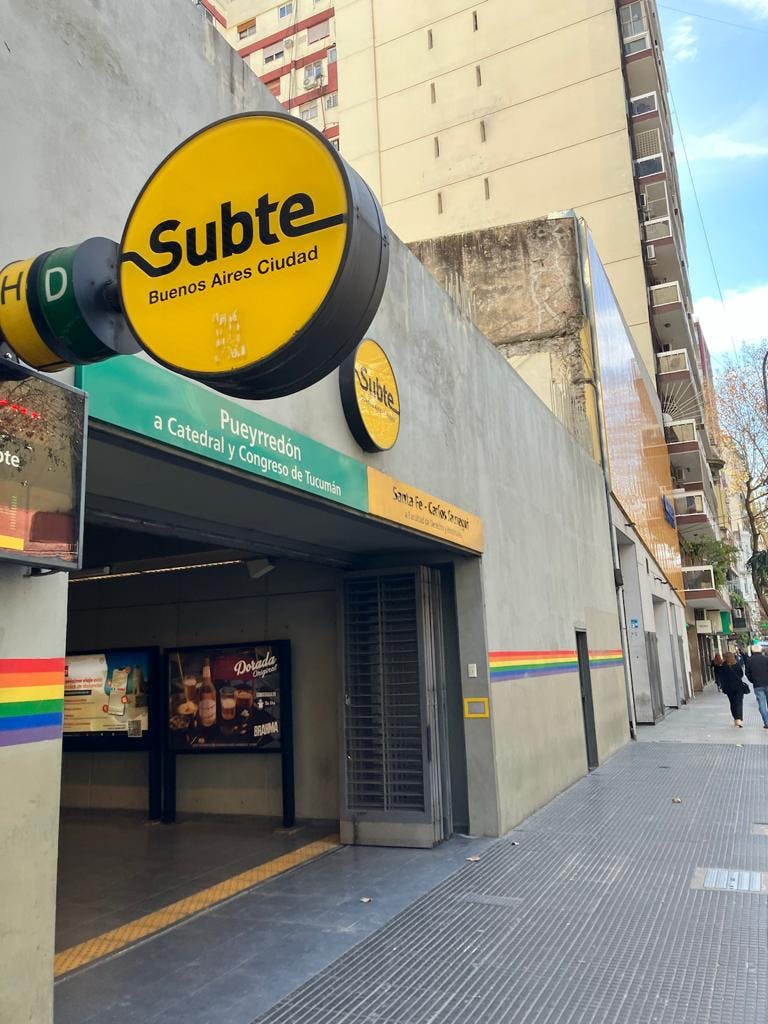
7. The price of public transportation is very low, not only in comparison with other countries, but also in comparison with other cities in Argentina. This is due to government subsidies: in Greater Buenos Aires, there are more subsidies, so passengers pay much less. For example, a trip on the bus in Buenos Aires costs less than one cent, whereas in Bariloche, it costs about 25 cents.
8. There are a ton of markets in the city, especially on the weekends. In Latin America there are commonly lots of markets, but I think Buenos Aires takes it to another level.
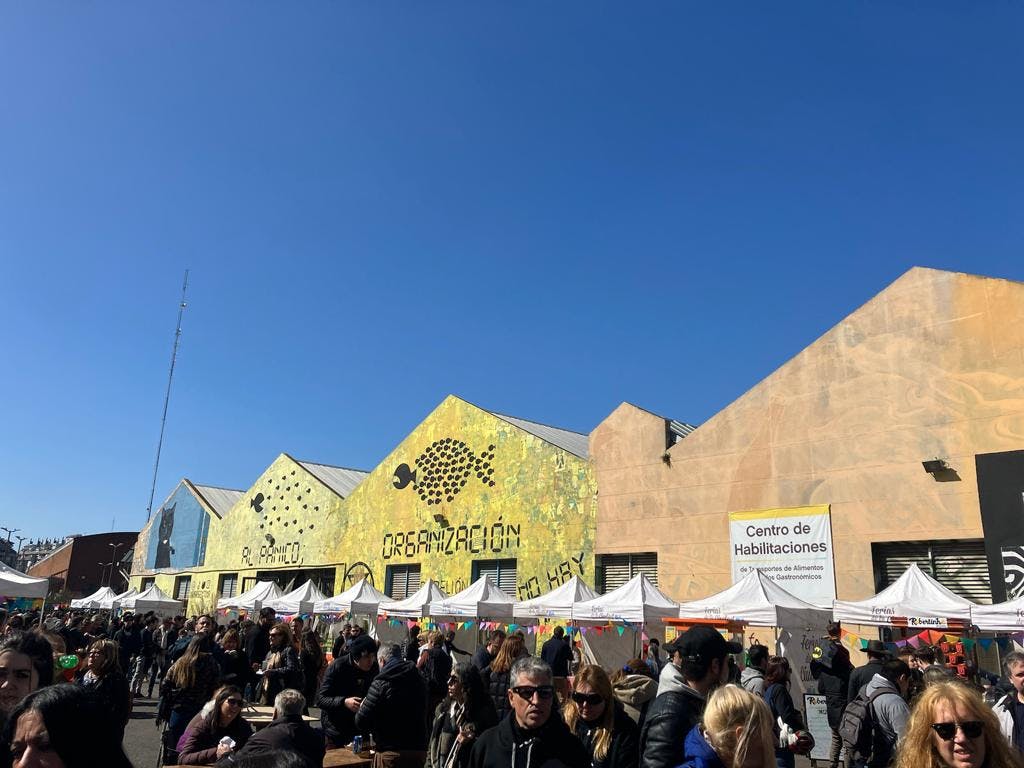
9. There are also many festivals that the city and the Ministry of Culture organize. There are festivals for food, different cultures, music, etc. One of the most popular editions is “The Night of…”, in which there is a thematic celebration that lasts all night. For example, I participated in “The Night of the Museums”, where all of the museums in the city had free entry for one night. Some other examples would be “The Night of Ice Cream Shops”, “The Night of Bookstores”, “The Night of Embassies”, etc.
10. The City of Buenos Aires is the city of protests. Though in other parts of the country there are also protests, the majority happens in Buenos Aires, considering it’s the capital and the most important city of the country.
11. The most modern neighborhood in the city, Puerto Madero, is made up of streets named after important Argentine and Latin American women. There you can also find The Woman’s Bridge, an architectural tribute to women that takes the form of a couple dancing Tango.

12. Notable Bars abound in the city. They are historical bars where well-known people like musicians, writers, actors, politicians, etc. would meet up. Some bars are “Bar Británico”, “Tortoni” and “El Hipopótamo”.
13. Tango, some would say, is originally uruguayan. In reality, it’s a musical and dance tradition that has its roots in the Río de la Plata region, in Montevideo (Uruguay) as much as in Buenos Aires. It comes from immigrant, creole and african influences. It is definitely unique to Buenos Aires, though, as it has had a profound influence in literature, culture, music, and the city’s international reputation.
14. The police cameras are another peculiarity of the city. When one thinks of a well-monitored city, they might think about London. Well, Buenos Aires also has a ton of cameras, which can be easily seen in intersections. At one point, there was an ad from the police that stated 75% of the city was under video surveillance.
15. According to some sources, Buenos Aires is the city with the most bookstores per capita. Whether or not it’s true, the city has many bookstores that form an important part of the culture. In Corrientes Avenue you can find many bookstores, and some of them are open 24 hours. In addition, there are many stands where you can buy second hand books, like in Parque Rivadavia or Parque Centenario.
¡Hasta pronto!
El Yankee
Las chicas de las 3
In 2020, Netflix published a series called Street Food Latin America. In each episode, a new Latin American city is presented, with a focus put on the food and people of the city. Plus, each chapter tells the story of the cooks behind the gastronomic scene in each city. The first episode, Buenos Aires, Argentina, was one of the many representations of Argentine culture that convinced me to study in Argentina. Specifically, the story of Pato and her partner, Romi, and their food stand inside of the Mercado Central caught my attention. Ever since I saw that first episode, I knew that I had to travel to Argentina, and that I wanted to visit the market.
The food stand, Las chicas de la 3, is located in the Mercado Central de Buenos Aires, one of the few places in the Buenos Aires Providence where bulk sales are allowed. The restaurant has been there, in the market, for quite some time, considering Pato’s dad is the one who started it. “Las chicas” are famous for their Spanish omelet filled with cheese and ham, but they also make other typical Argentine foods, always with the use of fresh vegetables and products from the market.
The other day I went with my friend, by bus, to finally try the food. Because we had lost the bus that would have brought us directly to the market, we decided to take another bus that would leave us close by. It turns out that the market isn’t located in a very safe neighborhood, or at least not in a place that’s meant for walking adrift. People looked at us weirdly–it was obvious that we weren’t meant to be walking around there. Finally, we made it to the market, but the place was huge. We couldn’t find where we had to go. Luckily, there was a girl around our age who was also lost. She helped us out, but the first thing she did to us was that the streets around the market weren’t safe! With the help of Iara, the girl we met in the market, we were able to navigate our way to Warehouse 3, where the restaurant is located.
In Las chicas de la 3, we met Pato and Romi–it was an amazing experience. In the series, they are both delightful, very passionate and friendly. They were just the same in person, and they treated us very well. We sat down and ate–Sara, Iara, and I–some empanadas and the Spanish omelet, and everything was delicious. After, we found our bus, this time the correct one, and returned to the city. It was a day filled with unexpected, but definitely unforgettable, adventures.

I hope you are all doing well!
El Yankee
An Ode to Argentina
The other day, I was thinking when I realized that these updates are lacking a bit of excitement. That is, I also want to show you all the amazingness of Argentina, what has made me fall in love with this country. And, I think, the best way to do that is to share some of my favorite photos. I tried to focus on the pictures, so this is, let’s say, just a small sample of everything that I love in Argentina. I could have said and shared a thousand other things!

Wow, Argentine gastronomy–it’s so varied, so delicious, so incredible! In the City of Buenos Aires, restaurants, coffee shops, and bars abound. There’s everything–traditional Argentine food, Italian food, Spanish food, Asian food; there's food from all over the word, and it’s all amazing. Then there’s also the wine. Of course, the Malbec (which is not the wine in the picture) is the queen of all wines and the faithful companion of the asado. An asado is a whole topic in and of itself (for now, it’s enough to say it’s similar to a BBQ)…in the picture you can see the grill, where one of Argentina’s greatest prides takes place. Of course, there’s coffee too. You have traditional cafés that keep the Porteño tradition alive, but you can also find, like the coffee in the photo, specialty coffee that is as good as in any other city known for their coffee shops.
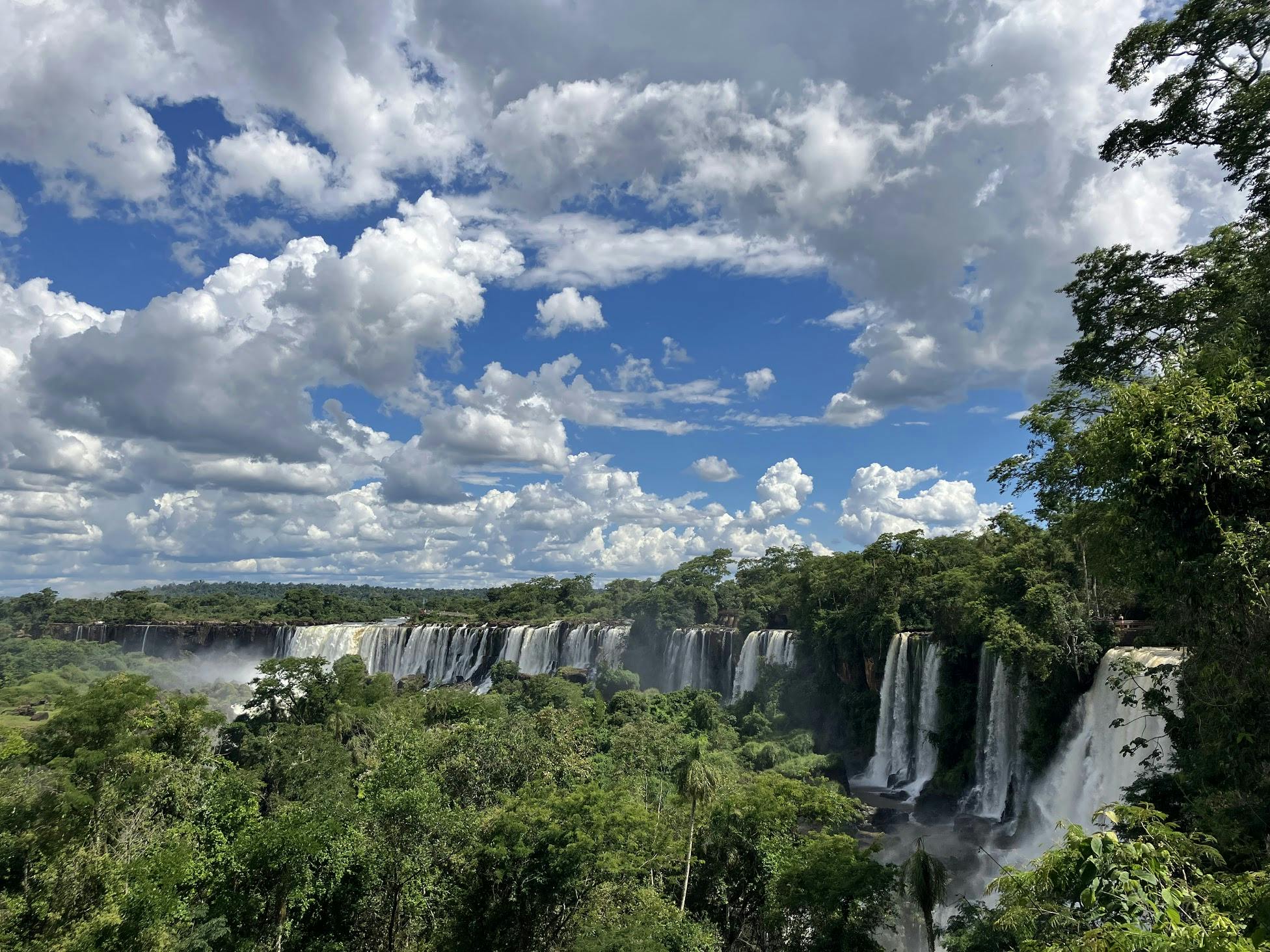
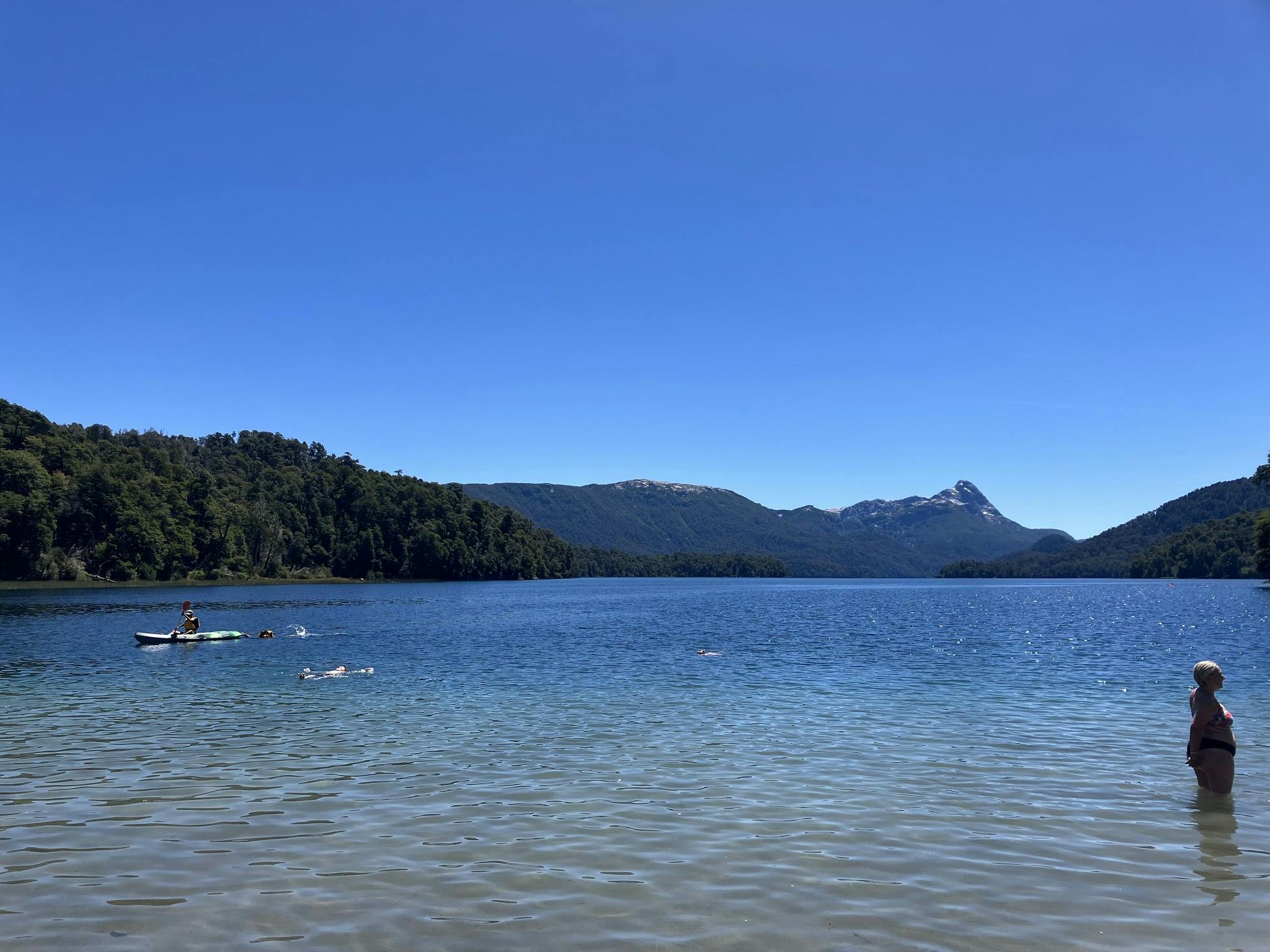
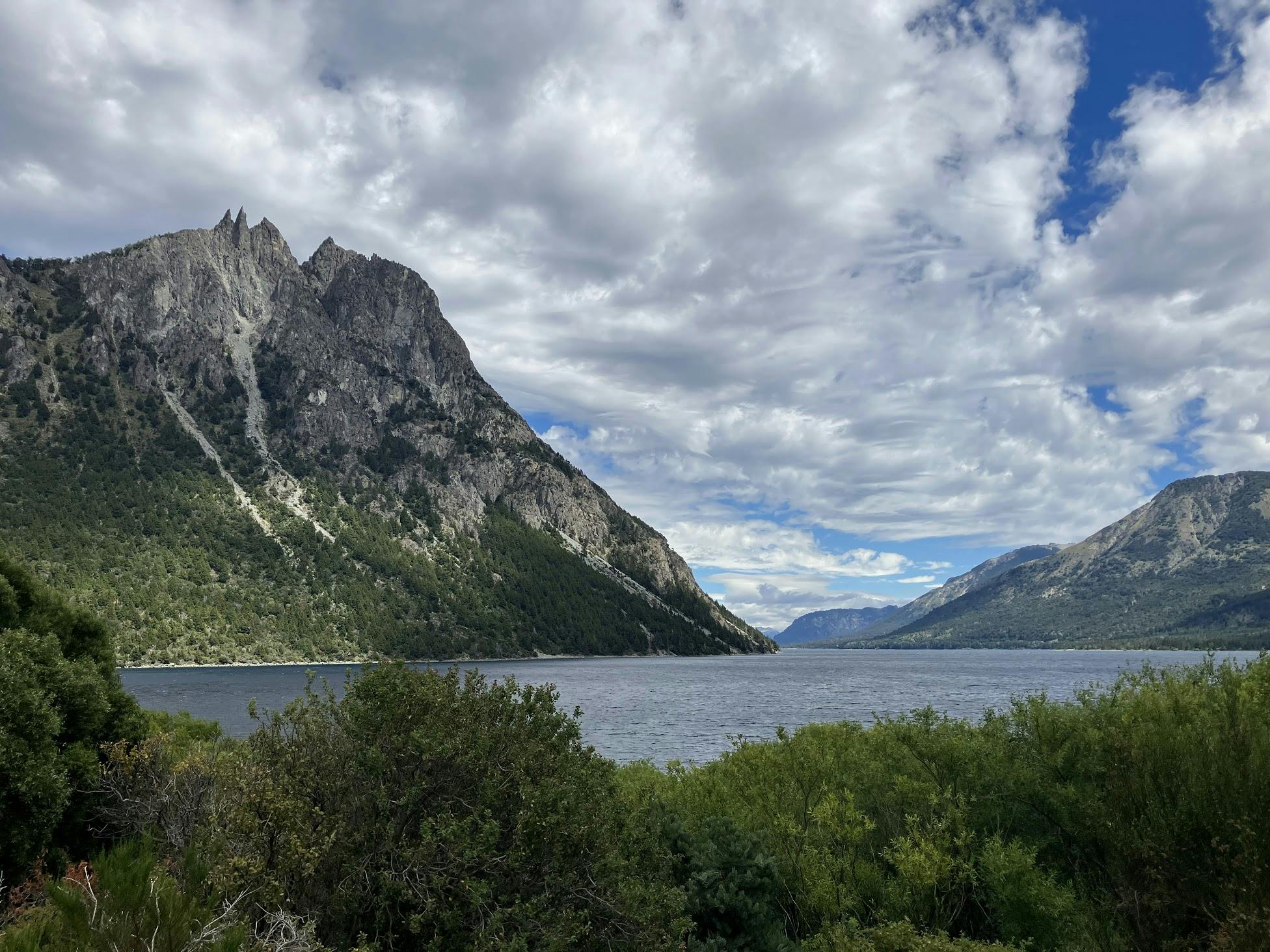
Argentina is known for soccer and Tango, for the shhh sound when pronouncing “y” and “ll” and for the personal pronoun vos when conjugating in the second person singular. However, it’s the scenery, to me, that really makes the country stand out. In the northeast, there are subtropical landscapes, with jungle flowers and animals and the Iguazu Waterfalls, which are impressive, formidable cascades. In the south, Patagonia leaves you breathless: the towering mountains are reflected in the crystal of pure, celestial-blue water. There, the air is curing–it smells of trees, flowers, and grass. The calmness is relieving and it feeds the soul after living the chaos of the city.
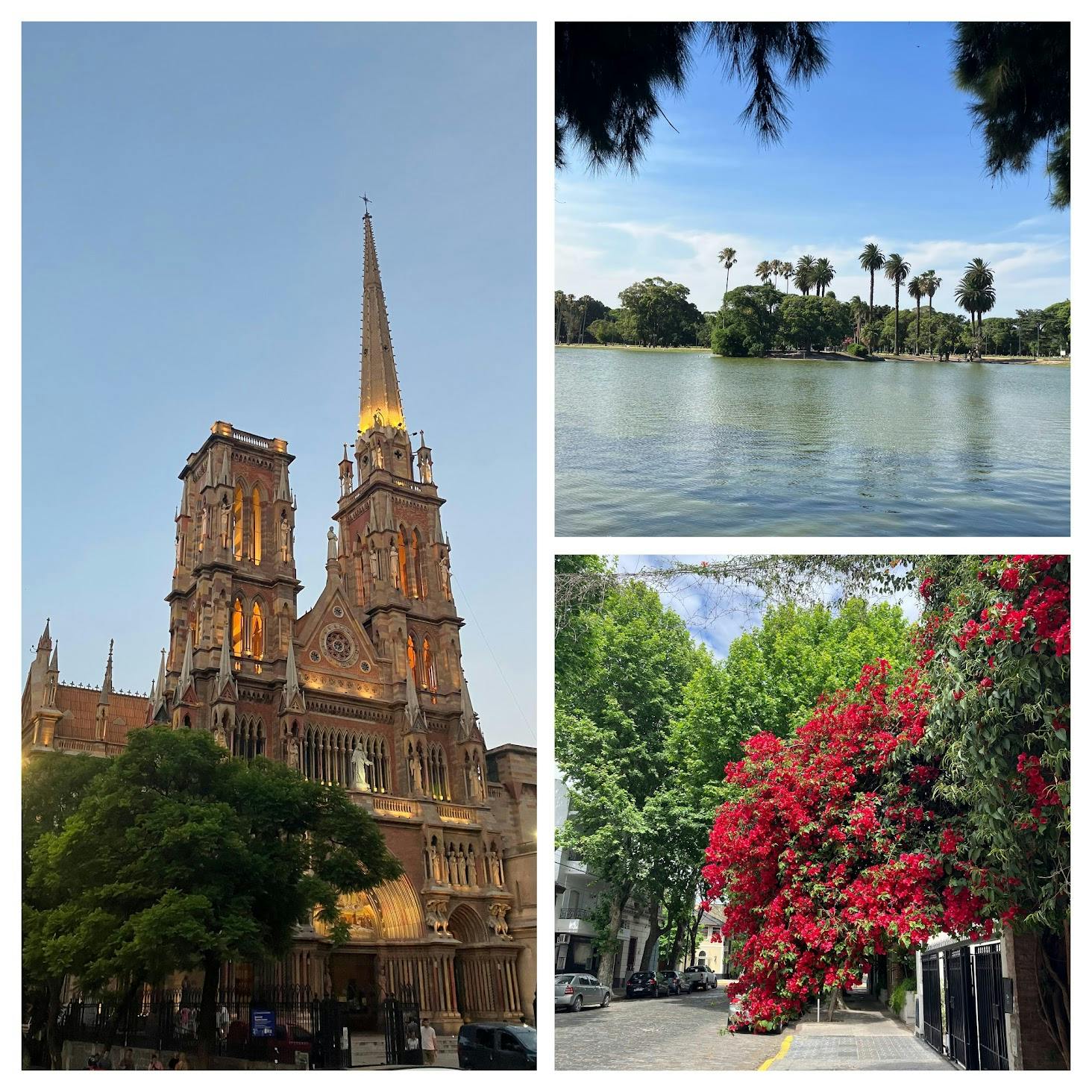
The natural landscapes here are really amazing, but so are the urban landscapes. In fact, it's the clash between nature and urbanity that enchants me. In all the big cities, but especially in Buenos Aires, the parks and plazas inspire a feeling of renewal and harmony: they’re like refuges of nature and peace in the middle of the noise and rush of the streets. And, though often the city speed is tiring, in those chaotic streets there’s stunning architecture, churches and buildings that compare, and even surpass, Europe’s grand architecture.
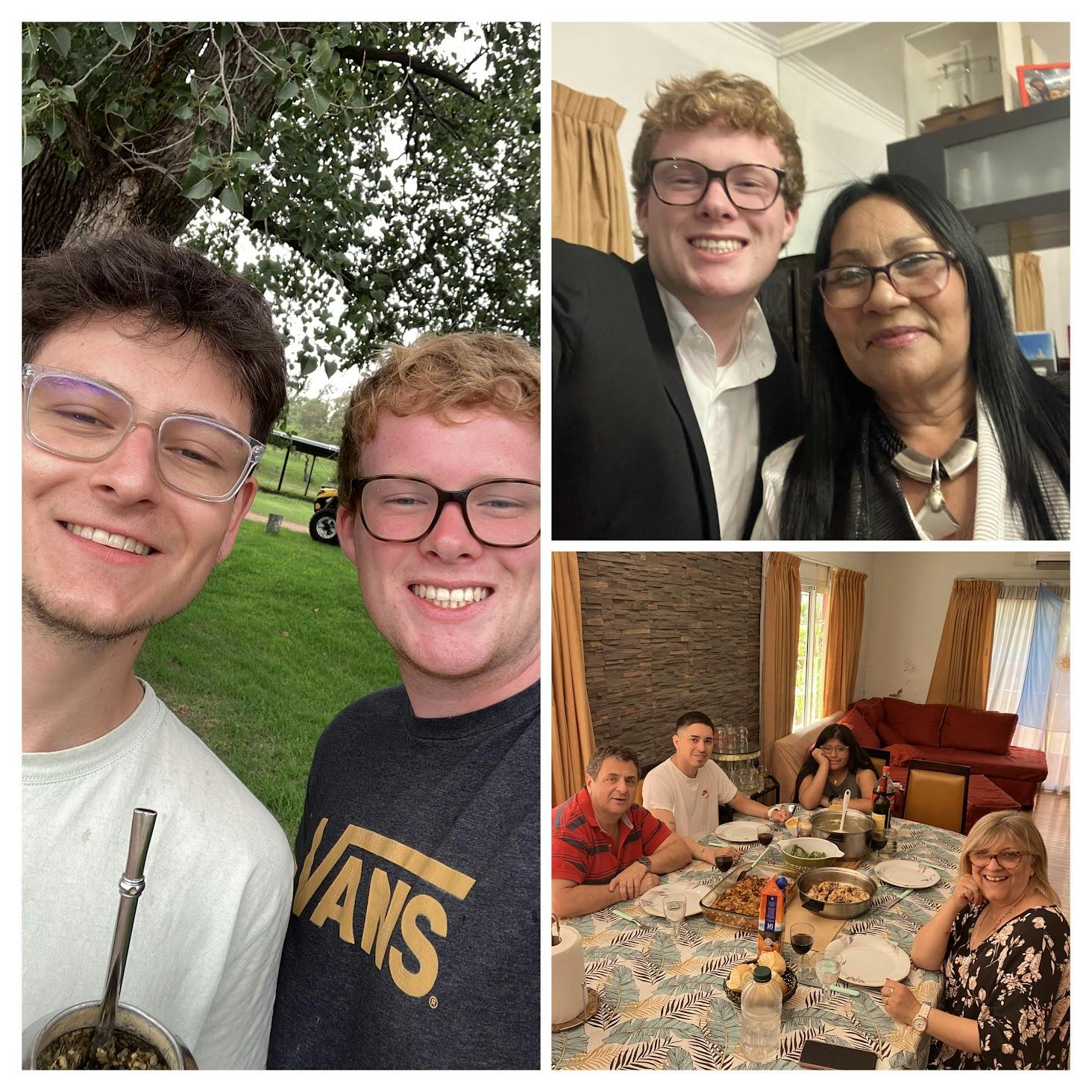
But there’s nothing better than the people. The other day I was in a village in Córdoba, visiting an Argentine friend I met in Slovakia, when his mom asked me what I like most about Argentina. Normally, I hate that kind of question, because I can never respond to them well. But almost without thinking, I had my response: the people. Argentines are friendly, passionate, social, and welcoming. In the picture you can only see my friend Joaquín, my host family, and the lady who works in our house, Leo–they’re only some of the many people that I’ve gotten to know in Argentina. I’ve met great classmates and professors, taxi drivers, people in the streets, waiters in coffee shops and restaurants, etc., and all have welcomed me to their country and have been willing to help me. It doesn’t matter where you go in Argentina, you’ll find people that treat you very well.
A big hug!
El Yankee
The Yankees Take on Argentina!
Just the other day, I said goodbye to the last of my family members–my mom, aunt, other aunt, uncle, brother, sister-in-law, and sister-in-law’s brother all came to visit me in Argentina. Wow!, right? How crazy to have so many people visit, that I got to share with so many people a place I’ve come to love, and that a microcosm of American Midwestern culture traveled its way through Argentina for almost a month!
I absolutely loved seeing my family, and we had a blast exploring Argentina. The experience was quite unique, one I don’t think too many study abroad students get. I mean, when my family visited, I had been living in Argentina for about five months: I could speak the language, I had begun to build relationships with my host family and friends, and I had gotten to know the City of Buenos Aires pretty well. By the time they arrived, though, I had only begun to familiarize myself with the Argentine culture. I was an amateur Argentine thrown into an expert’s role: I, still forming my own ideas, trying to make sense of a new country, dialect, culture, etc., was all of a sudden meant to be an interpreter between the American and Argentine culture. Don’t get me wrong, I loved it. It was a new, exciting experience. But it definitely presented challenges.
I don’t consider myself an expert in culture, and I won’t pretend I am. However, I have lived in another country before, and my entire career is basically founded on the study and teaching of culture. Therefore, I think it’s fair to say I approach culture in a well-informed, skilled manner. Plus, I came to Argentina with a critical, careful, objective lens. That is, I came to absorb my surroundings gradually, scaffolded by this very blog and culture theory, knowing that I had a whole year to learn and observe. My family, on the other hand, came for a vacation–they had little time to take in what they were seeing and had to hastily make suppositions/conjectures about Argentina. And, of course, they weren’t prepared to be cultural investigators. The result of this clash? Months of careful observations, evolving hypotheses and conclusions, and opinions were abruptly challenged by my family’s first impressions of Argentina.
In the end, I’m beyond grateful for the experience. But in the moment, it was somewhat stressful, as though I was going through culture shock, caused by interacting with my own culture, while at the same time still immersed in Argentine culture. I was forced to see things I didn’t necessarily want to see, I saw new places I probably wouldn’t have seen otherwise, and I experienced Argentina from new perspectives. I also came to acknowledge that I had somewhat idolized my host country, and in my wonderment failed to notice salient issues and problems. Most importantly, I realized the importance of the name of this blog: “El Yankee en Buenos Aires”. Before I saw myself as a “developing Argentine”, starting from scratch, and ignored a very important factor, the whole foundation of this blog: I’m an American in Buenos Aires. I can’t effectively hope to arrive at intercultural competence without being able to relate my host culture to who I am and where I come from.
Going forward, I intend to not dodge issues and causes of discomfort, instead I will confront them head on. Countries have advantages and disadvantages–it’s counterproductive to ignore negative aspects–and it’s okay to recognize them. The real problem is making hasty conclusions and disseminating misinformation without thinking critically and seeking alternative conclusions. As for the “Yankee” part of the blog, I’m going to explore, value, and seek to understand myself better as a Minnesotan and an American, and think about how to relate and facilitate understanding and communication between the two cultures.
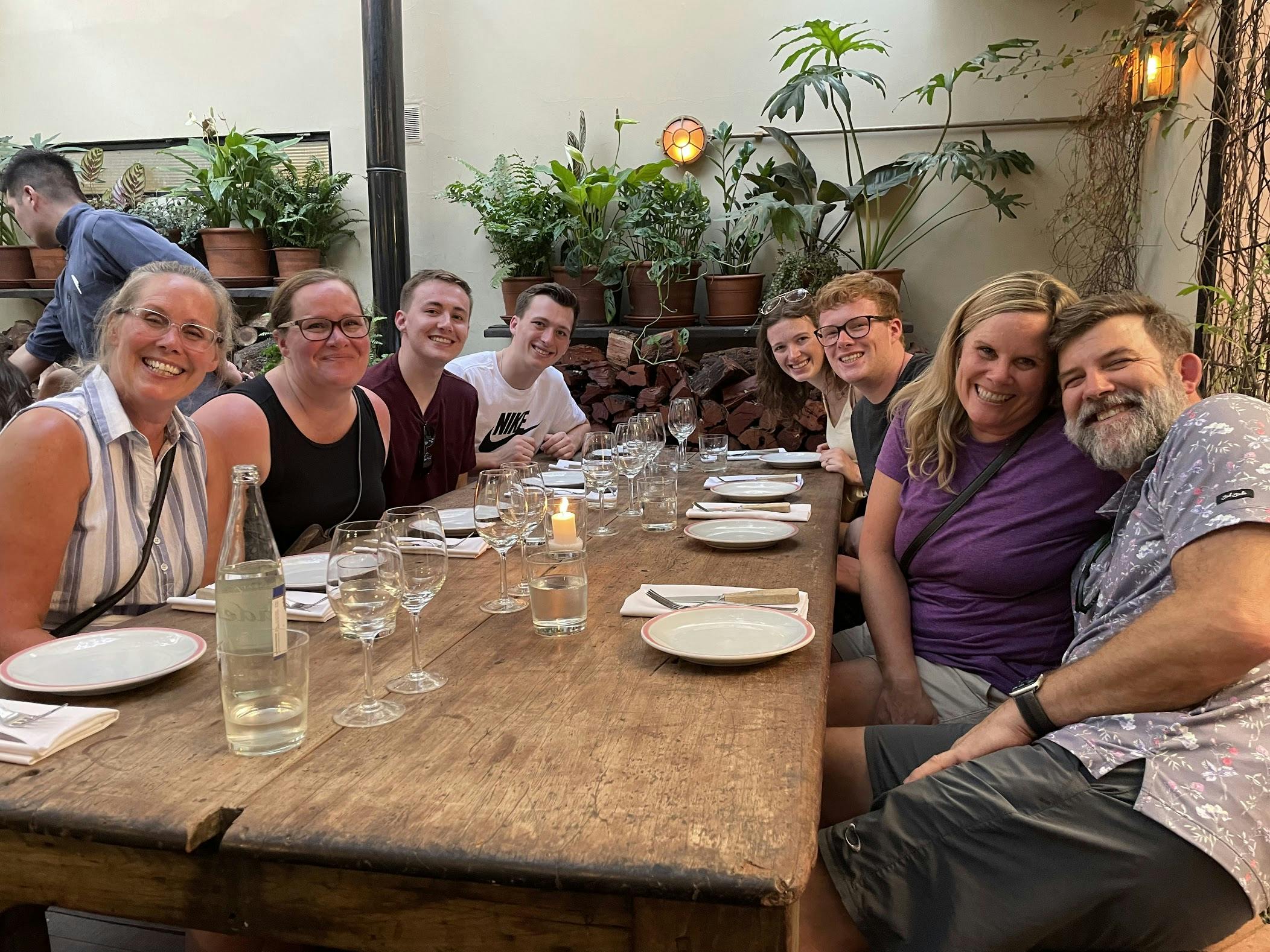
Here's one of my favorite photos. We ate so much good food, made great memories, and laughed a ton. It really was refreshing to have a bit of home in Argentina. I look forward to years of looking back on our great adventure!
Un abrazo fuerte,
El Yankee
The Porteño Spiderweb: How BsAs Cables Made Me Ponder Culture
A few weeks ago I was working frantically to finish a monograph–the last paper I had to finish before the end of the semester–with a classmate. We were in the small office of her family’s company, which is located on about the tenth floor of a building in one of the more central parts of Buenos Aires, that is, it’s in the middle of one of the busiest, most important, and most developed parts of the whole city. After hours of writing and being seated, I stood up, walked to the window, and looked at the buildings on the other side of the street. For the first time, something called my attention: there was an unending number of cables that hung from each building and joined together in a few main cables that went from power line to power line in the street. There was cable after cable after cable–instead of going underground and through the interior of the buildings, all of the building’s floors were connected from the exterior. Some have dubbed it the “Porteño Spiderweb”, because it looks like a complex network of strings from above. The synthetic spider web especially caught my attention because in this particular area, although the buildings were old, the majority of them had been renovated at some point, or they at least seemed newer.
In the days that followed, I noticed that it was like this throughout the whole city, not only in that zone. I couldn’t believe that I hadn’t taken note of such a noticeable phenomenon, and neither could I understand why the cables were like that. I imagine there’s some sort of answer, but in the next few days, it wasn’t the reason behind the cables that I ruminated on, rather, I thought about culture and how the cables can be thought of as an analogy for culture.
But before considering the analogy, another perspective that the cables afforded me: one accustoms to living daily routines: it’s easy to get lost in quotidian life. In my case, I was accustomed to going from my house to school and then back home. Even when I was going to a new place, I didn’t look up until I arrived. And even when I would look up, I didn’t always notice what I was seeing, because sometimes it’s hard to observe things even when they’re right there, right in front of your eyes. So, when I finally took note of the cables–which were always there–I realized that I need to pick up my head more often, that I need to pay attention to everything surrounding me and enjoy the new, the different.
Allright, the analogy: the cables made me think about what culture is and how it works: these cables form an infinite and unorganized network. They reach all (or almost all) buildings, apartments, shops, houses, etc. And they’re all connected; in some way or another, all the cables in the city are interlaced. Nobody (or at least most people) understands how this network of cables works, and including those few experts that do understand the system are incapable of knowing every cable, every part of the network. And despite all this–that this network is infinite, unorganized, and impossible to understand–it works almost by itself; electricity reaches all parts. So, thinking of culture as a network of cables, it is also impossible to understand culture completely, and there isn’t really a reason for doing so. Plus, those few that do study culture, like electricians do for their customers, should utilize their abilities and knowledge to help the common person. Experts in culture and in specific cultures should disseminate information to ensure that the cultural “system” functions well (functioning well as in understanding and being aware of one's own ways of living and the potential impacts this has on communication and interaction with others), to help others to understand how other systems of culture work, and even to understand new practices that arise in old systems (meaning new ways of being that appear and begin to become a part of traditional, more accepted ways).
I don’t think that they’re are too many important consequences from these observations. I just wanted to share the importance of valuing what we tend not to notice, and at the same time remind myself that it’s impossible, useless even, the objective of knowing and understanding everything around me. In the end, there are a myriad of curiosities in the world that are simply inscrutable, no matter how hard we try to understand them.
El Yankee
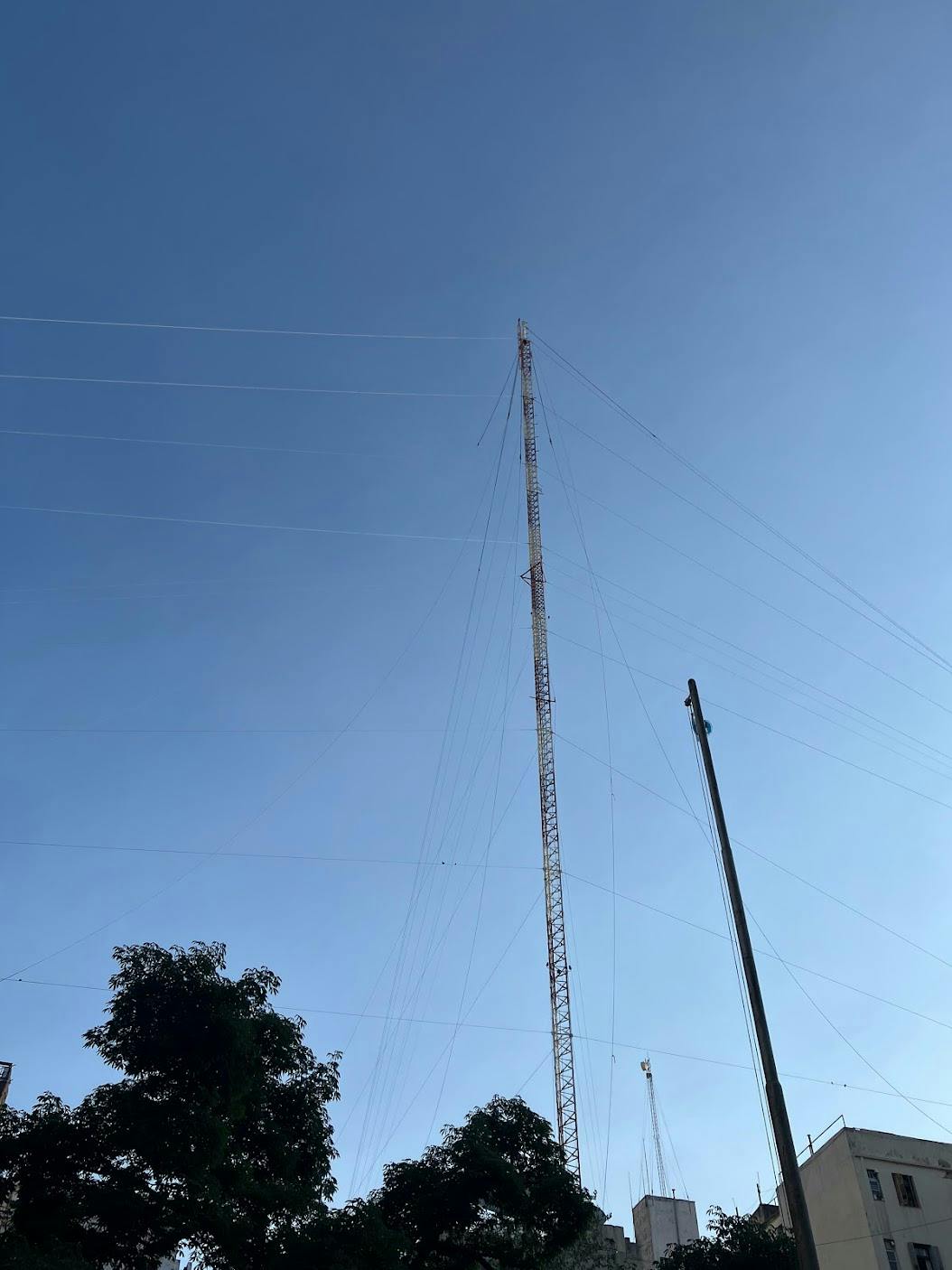
Here you can see an example, if you look closely, of some cables in BsAs. These are not the cables I described, though.
The Argentine Kiss
The majority of Americans, quite frankly, are cold: when meeting a stranger, the default greeting is a distant hand shake, where one’s sacred personal space is violated temporarily with the reluctant joining of hands (not to speak of that odd Covid-era modification of touching elbows); when greeting classmates or coworkers, one might give a nod of acknowledgement, and on the rare occasion they are feeling particularly cheerful, they’ll even accompany the nod with a smile; and even when greeting friends and family, many prefer a casual side-hug before resorting to that dreadful act of intimacy called hugging.
If there exists an antithesis to the stereotypical coldness of an American salutation, the Argentine salutation is surely the most felicitous candidate. My experience the other day, when I was in class waiting for the professor to arrive, best characterizes this “Argentine salutation:” I watched as an acquaintance, someone I’ve talked to once or twice, walked towards me. I could tell he was going to sit in the empty seat next to me, so I moved my legs for him to get by. Before I knew it I was being kissed on the cheek! I found myself completely dumbfounded, as if, for an instant, I was in the US once again, and a classmate I hardly knew was kissing my cheek. I quickly remembered where I was, how Argentine greeting works, and my feelings of discomfort were quickly replaced with a feeling of flattery: I was greeted–accepted–as any other classmate would be.
While kissing is a common greeting in many countries (in Slovakia, for example, it’s quite common between men and women to greet with a kiss on either cheek), the Argentines, or at least porteños (those who live in the City of Buenos Aires), take things a step further: a kiss on the cheek is the norm (it’s expected even) when greeting a stranger for the first time, no matter the gender of either counterpart. Kisses between men and women have been around for quite some time, but the universal kiss that crosses gender and formality boundaries is a more recent custom. Kisses between men, according to an article from La Nación, began in the 1970’s and became common practice in the 90’s (1). Today, classmates, friends, family members, acquaintances, and often strangers will greet each other with one kiss on the cheek and, in many cases, the kiss is followed by an embrace.
After two months of greetings, I can comfortably say I’ve become accustomed to the kiss. That wasn’t the case when I first arrived. Then (and still now), it was difficult to tell when greeting with a kiss was appropriate. In most cases, a kiss is preferred, but there are situations where it’s not at all appropriate (for example, with professionals, or with someone who chooses not to greet with a kiss). For example, the first month I was here I greeted an old man with a kiss, and I left him looking quite uncomfortable. So, when meeting someone for the first time, it can be very awkward, as one has to read the situation well. Second, I was uncomfortable with greeting other men with a kiss (and this is a whole other discussion about gender and gender stereotypes that extends beyond the scope of this post), considering I come from a culture where a “bro-hug,” high-five, or handshake is the preferred interaction between two men.
I’m not the only one who had an adjustment with the Argentine greeting; in the article referenced above, the author claims, “The line between who to kiss and who not to kiss has blurred so much that it’s impossible for foreigners who visit or live in Buenos Aires to convert the habit into a rule of behavior” (1, translation is mine). Though I admit the article’s characterization of a foreigner’s inability to easily adapt to the infamous kiss, I feel obligated to challenge the qualifier “impossible” and the label “foreigners.” When greeting strangers for the first time, I’ll admit I do second guess myself still…but so do Argentines–it’s difficult for everyone to tell exactly when greeting with a kiss is appropriate. One time, while in a class, I watched in the hallway as a girl (who I assume was a student/newer professor) greeted a group of older individuals (who I assume were professors); she clearly knew most of the older individuals, as she confidently greeted them with a kiss and an embrace. But there was one individual who she must not have known, because she did this sort of shuffle/waddle/walk with her arms spread cautiously; apparently, she judged by this individual’s demeanor that he was not looking for a kiss, because she awkwardly stretched out her hand to shake his and quickly moved on after the fact.
So, with strangers I’m still learning the “Argentine pragmatics” of when to greet with a kiss and when not to, but with family and friends (and now classmates) I greet with a kiss without a second thought. In fact, I’ve come to appreciate the greeting, and the overall approach to personal space and contact. There is less distance (both literally and figuratively) between people, thus making new environments more comfortable and welcoming. This is especially the case when first meeting new people, as any awkwardness is overcome immediately. Also, extending the kiss to be a universal greeting effectively challenges gender stereotypes: in many cultural contexts, two men greeting with a kiss would cause discomfort and criticism from observers, but in Argentina (or at least in Buenos Aires), it's a normal, welcome practice.
Un beso,
El Yankee
Studying in Buenos Aires
I’ve been wanting to share an update about how things are going here, but most of my time has been focused on my classes. So, I think the most fitting for now would be to share my experiences studying at the University of Buenos Aires (UBA).
To describe the UBA is difficult, because there really is no “concrete representation” of the university. It’s almost like the UBA is a conglomerate of other universities that are all loosely connected, because the student experience is so varied throughout the institution. My “college,” which is referred to as a “facultad,” is one of eleven that are located throughout the city. My college is the Facultad de Filosofía y Letras (FILO), which is located in the Caballito neighborhood. The best way to describe this facultad is to describe my first day of classes:
As I walked down Puan, the street where FILO is located, I was accompanied by a small crowd that walked towards the same destination as me, many coming from the subway, from all parts of the city and beyond its limits too. What first caught my attention was the run-down state of the building and the graffitied, poster-covered outer walls. Outside the main entrance there were vendors selling sandwiches, coffee, necklaces, books, and other trinkets. When I walked into the building I was greeted by a waft of cigarette smoke and an old-book smell. Inside there was an atrium filled with students chatting, reading, drinking mate (a traditional tea common in Argentina, Uruguay, and Paraguay), and smoking. I walked up the stairs to wait for my class, where I stood behind a large group of students standing outside a lecture hall, where our class of about fifty would meet throughout the course of the semester. Some people (like me) were standing alone, clearly without friends in the class, perhaps some (like me) completely new to the college. A janitor came to open the door, and once it was unlocked, everyone flooded in, rushing to get a good seat. We faced, lecture style, the front of the classroom, where there was a well-worn whiteboard and a permanent surgical-looking table bordered with campaign posters that functioned as a table skirt. Soon after most were seated, the professor walked in; he forgot to introduce himself, walked right to the windows to welcome in a cold breeze and the cacophony of the street below, and began immediately to explain what the course was about. We were quickly lost in a passionate introduction to the literature of 19th, 20th, and 21st century Spain. As he talked, his words were mixed with the noises of the streets, the chatter that came in through the doors (which were shut but where there should’ve been glass panes there was nothing), and noises from students leaving, adjusting their seats, shuffling their papers, etc. At one point, a pigeon flew in and walked around the room. Three to four times throughout the lecture, a group of students came in, interrupted the professor to ask if they could talk about their student organization, and (I’m not sure how it was possible) managed to give two-minute lectures that were even faster than the professor’s. Two hours later, after the professor talked, stopping only to let the student groups talk, the class came to an abrupt end; all of the students filed out.
This image is not the classroom shared in the description. One poster reads, "To govern is to create jobs," and another says, "Are you familiar with the Marxist vision of your studies?"
This is the atrium at the center of the building:
I hesitate sharing this description with you all: I don’t want you to think of Argentina and its education as a politically-charged, smoke-filled, run-down building, because that isn’t the case. First of all, the experience one has at my college–the Facultad de Filosofía y Letras–is surely a unique experience. That is, this college is known for its quirkiness, for its tendency to be completely radically…different. When I tell a Porteño (someone from the City of Buenos Aires) I’m taking classes there, they immediately raise an eyebrow and wish me luck. If anything, my description should be taken as a stereotype shared among Porteños, not a stereotype for how education in Argentina is in general. Second of all, there are other universities, both private and public, that offer completely different experiences. Finally, and most importantly, the aesthetic experience that quickly captures one’s attention doesn't speak for the excellence required from students and professors: many of Argentina’s and the world’s greatest minds have studied and taught at the UBA (some specifically at FILO).
This is an example of how another college at the UBA looks:
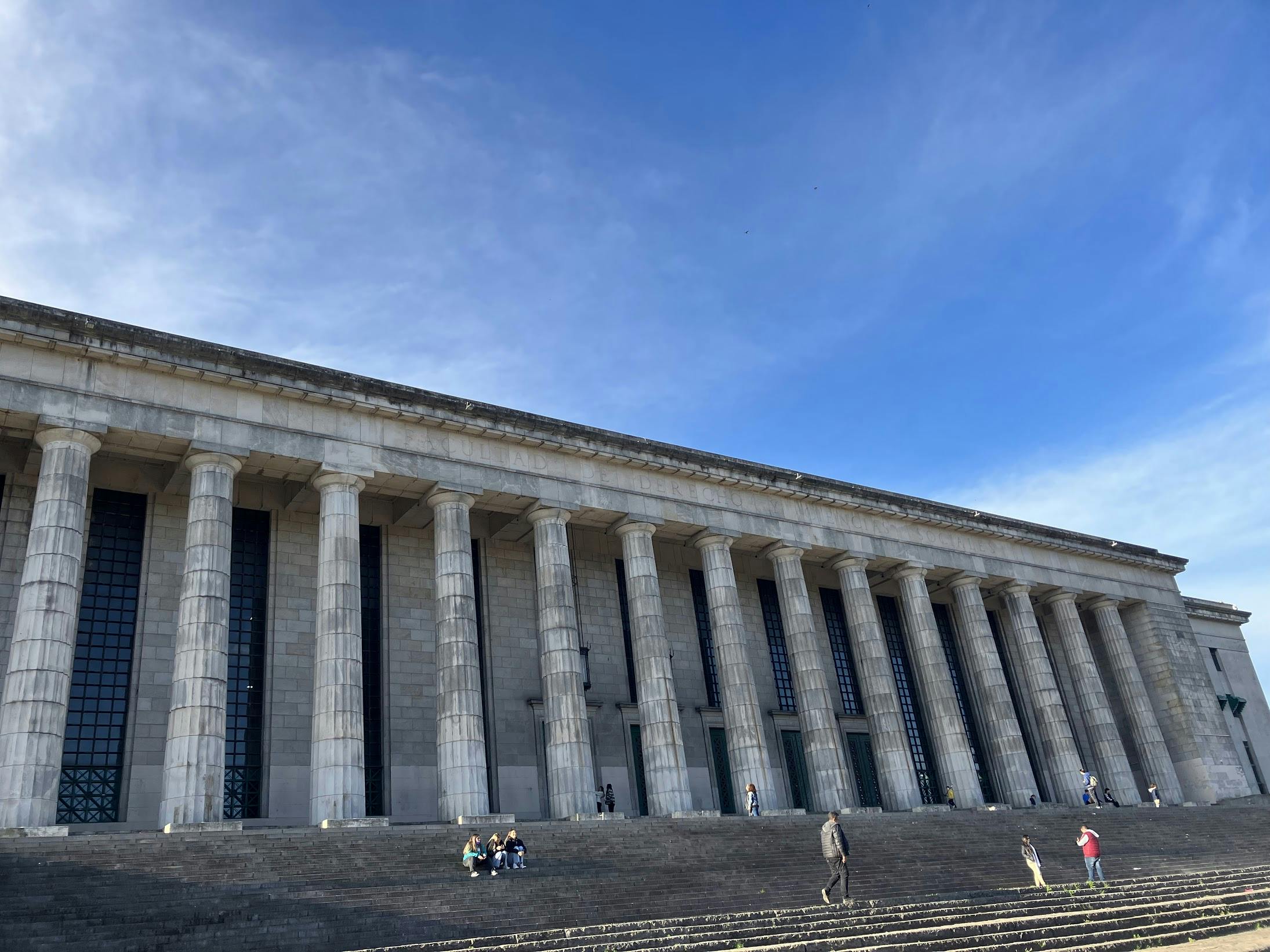
Despite me providing these reasons against generalizing my description, I’ll admit I personally was tempted to generalize education in Argentina based on my first experiences at FILO; I couldn’t help but think poorly of the college and what it said about education in Argentina. When I walked in the building the first time, seeing the political posters and smelling the cigarette smoke, I asked myself: “What does this say about Argentina’s perception of education? What does this say about how much they value education?”. I was inclined to answer that they didn’t value education. But, as I thought about the question after each of my subsequent classes, I began to think about what I was seeing and what it really represented.
To me, what I was seeing and what it represented directly contrasts to my perception of education and excellence in the US, the contrast being a difference in importance. In the US, importance is placed on aesthetics, and people worry about materialistic aspects of the classroom. Here, it seems that what is truly valued is the effort put into studies–both by the professors and the students–rather than into the building. Those same Porteños I mentioned earlier, that raised their eyebrows at FILO, without fail, would later state pridefully that the UBA is the best university in Argentina (and arguably in Latin America) and that despite a lack of funding and an abundance of issues within the University, an education from the UBA is highly esteemed. Americans, on the other hand, when asked about the best universities in the US, are more than likely to mention those which require lots of money, those which have churned out some of the country’s (and world’s) most important thinkers. In this sense, for many Americans (at least, for me personally and from what I can tell from my own experiences), expensive is synonymous with excellence. Sure, institutions like Princeton, Harvard, Stanford, Yale, Vanderbilt, etc. provide a rigorous education, and some of the best students in the world have studied and do study there. But each comes with a hefty price tag, and historically the students who’ve attended such institutions didn’t secure their spot based on merit, but bought it with inherited wealth (this is a not-so-subtle reference to a certain 2019 admissions scandal). Some, reasonably, would present the question: What about scholarships? What about those who worked hard and were rewarded by the meritocracy? In these American institutions, students are selectively offered the financial assistance needed to access the opportunity to pursue an education based on transcripts, test scores, and essays. At the UBA, and in Argentina, anyone who is willing to work hard enough and has developed the necessary skills/educational background is welcome to study.
So, when one compares a classroom in a prestigious American institution to a classroom in FILO, sure, one might have, for example, state-of-the-art learning technology and an aesthetic advantage, but when you consider the students, their stories, and how they arrived to the two classrooms, it’s clear that the value of education goes beyond what one sees superficially.
Despite what it may seem, this post isn’t meant to praise, discredit, or overgeneralize either the American or Argentine perception of education. Rather, it’s my hope to accurately share my experiences at FILO while challenging any readers (and myself) to think about one possibility as to how education is perceived in Argentina versus in the US in order to avoid making unfair conclusions.
Overall, I’ve really enjoyed my studies! The content–and language of course–has really challenged me as a student and second language learner. I’ve also had the chance to participate in some truly engaging discussions and lectures. Otherwise, for the next two weeks I have midterms, after which I’ll have more time to share more about my experiences so far.
Thanks for following along!
El Yankee
Introduction to the Blog
Hello everyone! I started this blog by posting "The Beginning of the Madness" without really introducing the blog or who I am. So, with this post, I’d like to do exactly that.
I’m Tyler Sampson, the Yankee, from Minnesota, USA. I’m a college student at the University of Wisconsin-River Falls (UWRF) in the US, and for the duration of the 2022-23 school year I’m a visiting international student in the College of Philosophy and Letters (FILO) of the University of Buenos Aires (UBA). With this blog, I’ll be sharing my experiences and adventures, as well as everything that I learn about Argentine culture and multiculturalism. This blog, El Yankee en Buenos Aires, serves two purposes: first, I’ll be uploading cultural reports for my project El Yankee en Buenos Aires: Cultural Blogging in Argentina; second, through this platform I’ll be updating my loved ones, friends, teachers/professors, and all those who have interest in learning more about Argentina, Latin America, studying abroad, multiculturalism, Buenos Aires, and more!
This adventure in Argentina really began 4 years ago, when I set off to live in Slovakia as a foreign exchange student with Rotary International. There I was able to develop a passion for culture, languages, and traveling. When I returned to the US, I finished my high school career at Monticello High School, and I graduated in Spring of 2020, in the middle of the pandemic. In that last year I had to decide what I was going to do when I graduate; after taking some university-level classes about Spanish and English and after having worked with kids, I knew that I wanted to do something with teaching and language. At UWRF, after about a year I realized that I love linguistics, Spanish, literature, and teaching. So, I decided to study teaching English and Spanish as second languages.
Thanks to some Argentines that lived in Slovakia during my exchange, and thanks to Dr. Goldfine, I learned about Argentina, its culture, and everything the country has to offer. From then on, I began to learn more about the country, and I realized that I wanted to study and live in Argentina. Unfortunately, there aren’t very many study abroad programs that go to Argentina, and those that exist are either too expensive or they only last one semester. Because I wanted to study for a year in order to perfect my Spanish and really get to know the country (and do so without exhausting all of my savings) I decided to go to Argentina independently. So, I applied to the College of Philosophy and Letters and began the preparation process.
One of the things that I did in Slovakia was an informal blog, to keep my family and friends up to date, as well as disseminate a bit of information about Slovakia. The blog was very informal, I did it only in English, and, if I’m being honest, the blog presented pretty superficial ideas. As such, this time I wanted to provide access to relevant cultural information that could also be used as a tool to reflect on my experiences and to guide my acculturation. So, with the support of a scholarship from UWRF, through the Undergraduate Research and Scholarly Creative Activities (URSCA), I created a project that focuses on Argentine culture and my own acculturation. But, I didn’t want to just provide educational information and research. I also did not want, at least to start out, to translate the cultural reports to English. And, considering that not everyone interested in reading this blog are Spanish speakers, this blog also has a part called “informal updates”. With these updates, I’m going to share my trips and stories that are less formal and more narrative-like, and I’ll be including pictures too. While the cultural reports will be published in predetermined installments, the informal updates will be published whenever, while things are happening.
Thank you for your interest in this blog, I hope that you follow my adventures and that you are able to learn a bit more about Argentina and culture. If you want to receive updates when I upload new content, you can subscribe to receive updates here.
¡Chau!
El Yankee
The Beginning of the Madness
This is going to be a year of stories: I haven’t even left the US, and the stories have already started, the madness has already begun. Now, I don’t want to say that Argentina is madness or a disaster, that’s not what I mean. But this world, it surely is madness, and when leaving everything comfortable, when moving to the other side of the world, when experiencing the bureaucratic processes–the applications, communications, and preparations in general–and the cultural processes–the culture shock, the constant meeting of new people, and the linguistic and cultural assimilation–life too becomes madness, filled with plenty of stories. And this story, to start all stories, started with an election; that is, the true madness: the US, its politics, its government, and its politicians.
Now, I don’t want to judge a country or all of its people–even if that country is my birthplace–but in the fall of 2020, I didn’t like at all what was happening in the US, and I was tired of it. This tiredness didn’t have so much to do with whom I wanted to be president, rather, it was the politicalization, the division between ideologies, and the lack of inclusion of and respect for minority groups that wore me out. Plus, I started university in the middle of the COVID-19 pandemic and I felt disconnected from the world; I wanted to get out of the country. As such, I began to look for universities throughout the Spanish-speaking world. Luckily, I found a university, the University of Buenos Aires (UBA), in a country located in the south of the world: The Argentine Republic. At the UBA, education is free, with only one requirement: you have to be able to speak Spanish.
Eventually, I realized that I really like the University of Wisconsin-River Falls (UWRF), that the US has much to offer (despite some problems), and that I want a US degree so I can teach in the US. But, Argentina hooked me, y and I found out it is possible to study in the UBA as a visiting international student. Therefore, I decided to start the process, and I applied to be a student at the UBA. I had to communicate with the University in Argentina, work with UWRF, and, basically, I had to organize everything myself.
After being accepted into the UBA, I started to look for living; the UBA does not offer living options (it’s this way not only for international students but also for domestic students). So, I attempted to get in contact with Rotary International to see if they could help me. It took a long time, lots of connecting and explaining, many no’s and lots of I don’t really know’s, but in the end, I was able to find an opportunity. Through an exchange program of young professionals, I will be able to live with an Argentine family in Buenos Aires for the first half of my stay. I’m very thankful for this opportunity and for the family that is going to host me, and I’m so excited to get to know Argentina with their help!
Soon after I learned I would have a host family in Argentina, I started the visa process…either visas hate me or the process of obtaining a visa is just a disaster universally. Either way, it has been a process with no end. First, in order to receive a visa from Argentina, I had to obtain a document from the FBI that says I’m not, in fact, a criminal. In order to get it, it’s necessary to fill out an online application, get fingerprints taken, and then send the fingerprints through the mail to Virginia. Afterwards, they return the document. But it doesn’t end there, of course: next, you have to return the document through mail to another office, to the US Department of State. This part of the process takes at least eight weeks. I’m sure you can imagine how, if this is how the process is for one document, the rest of the process might be equally as disastrous…
Just when I thought everything seemed to be okay, it all fell apart the other day. A week had passed since I went to the doctor to get an ear infection treated, and everything was fine, when my face began to swell up. I had to go to the ER! It was not, like a thought, an allergic reaction, but instead a skin infection that probably came from the infection in my ear. As you can see in the pictures, I wasn’t doing too well for a hot second. But, when I was given a steroid and some antibiotics, I started to get better. So far since leaving the ER, everything has been okay.
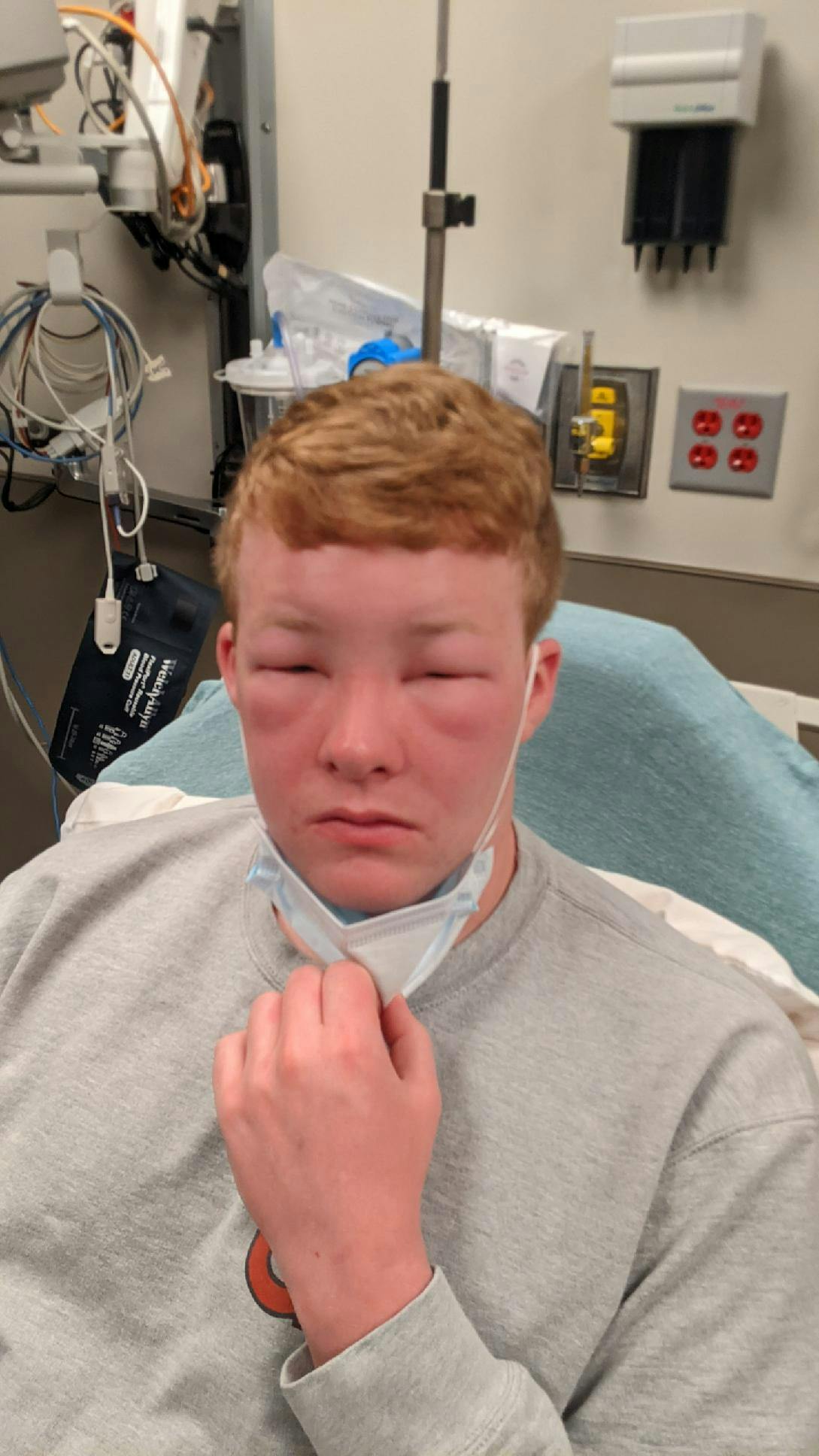
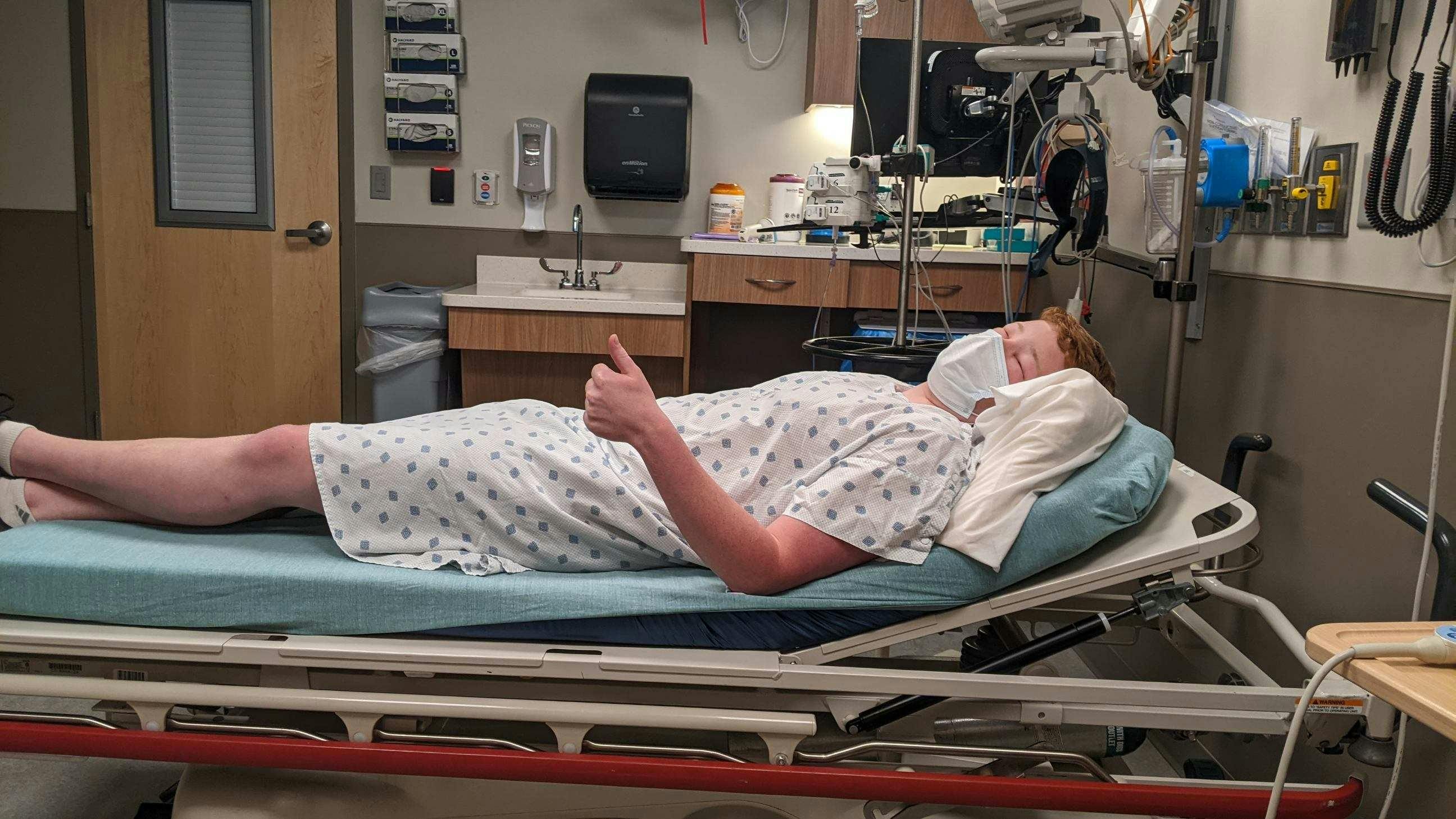
You’ll have to forgive me–in the future these informal updates are going to be much quicker and succinct, but with this one I had to bring you up to date with all that has happened up until this moment, which is the moment of my departure. Today, I’m traveling from Minneapolis/St. Paul to Buenos Aires, and the next update will be from Argentina!
For now, if this is your first time here, subscribe to receive updates for publications, read the introduction to this site, and explore the site a bit.
Thank you for following along with me in this madness!
El Yankee
